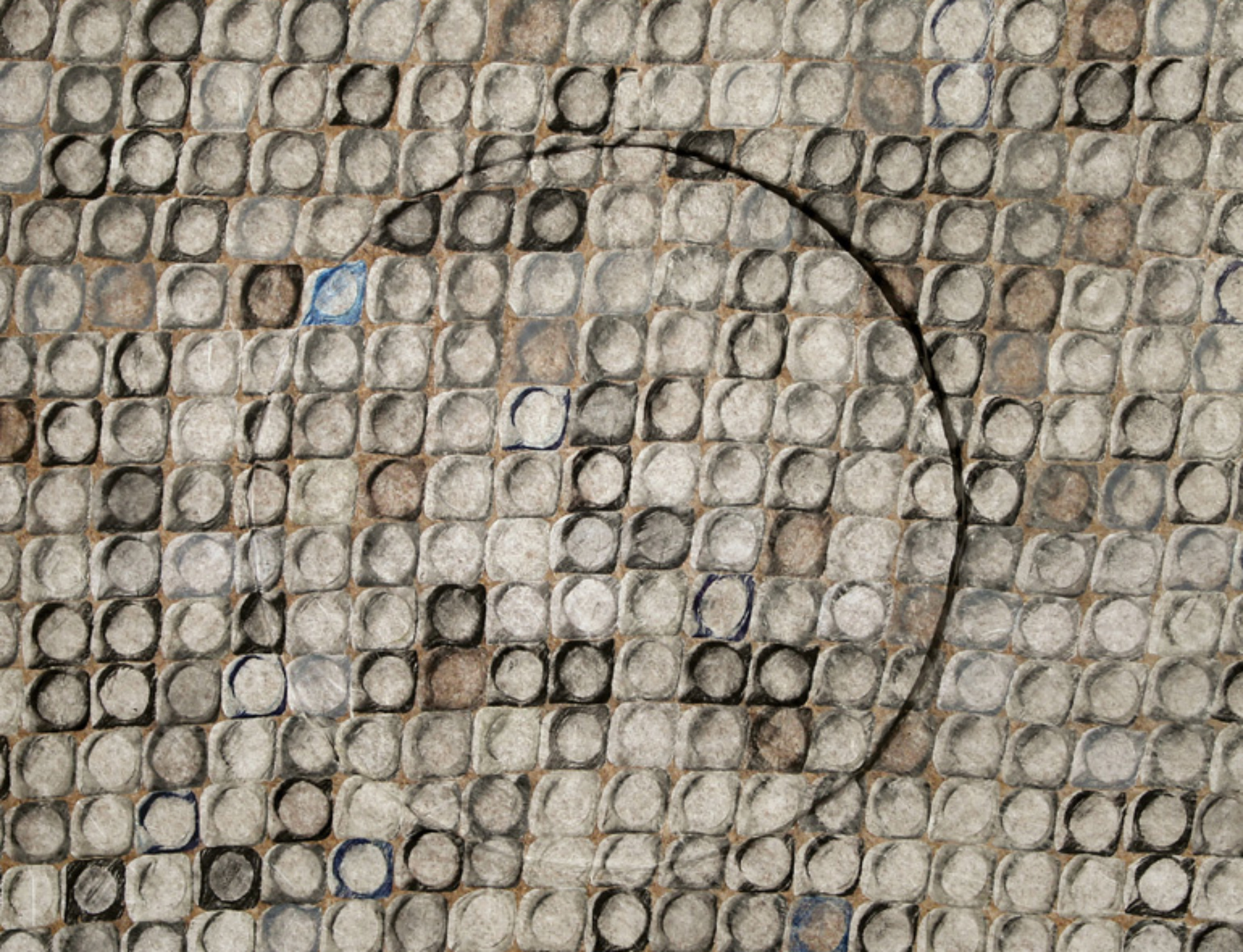In 1988 Caterina Ciuffetelli began her “poetry of line”: a work in progress in which signs – small or big, curvy, broken, gouged or lightly etched, in relief, all rendered shifting by the light – are what characterise her way of representing herself and the world in abstract forms. These signs impose themselves on the material of the background, and themselves become a part of this material, bestowing form to a language that has matured through an almost archaeological exploration of residual essences. The artist also traces signs on cellotex, a substance that is linked to the natural essence of wood. Her choice of material is indeed an integral part of her work and is the result of her need to return to the origins of her evolution as a painter and to the origins of existence. She uses material as a support on which to paint or to leave expressive traces even leaving it, in part, in its natural state so that it can be appreciated simply as material.
Her earliest work exemplifies some of the stages of such an approach or “poetics”. In the series Improbabili geografie, (1998-2001), the coloured and contrasted painted areas are delimited by unstable confines inviting the viewer to let herself become a playful explorer of microcosms. In Curve (2003), the large waves that stand out through chromatic contrast and the juxtaposition of shiny and matte indicate the artist’s exploration of a harmony in space, a space which is occupied by forces, energy, and emotions as in the eternal contrast of yin and yang, capable of finding a balance in the flow of curvilinear movement.
In the series “Foule” (2005), one can see an urgency to establish an order, without limiting it, to the crowding of thoughts that push their way to the surface. The result is a formal and fatally momentary organisation of memories, emotions, instincts only occasionally overcome, ready to immediately fall away and to lose themselves once again in the primordial chaos. In an increasingly fragile world where the image mirrors the virtual and not the real the need for concreteness is translated in an essential form, almost as if the painter, at the end of an historical exploration of her own essence, arrives at the simplest and most rational expressive sign: the geometric form. As if at the beginning of a new life, the artist recovers archaic modes of communication drawing from those Mycenaean signs with which art revealed itself at the dawn of painting: structural simplification, abstract outlines, but also and above all expressive synthesis. At the same time, Caterina Ciuffetelli’s strength is knowing how to distance herself each time from mere decoratism giving life and vitality to her “forms”; from geometric symbols they become calligraphic signs that at one time stand out and while at another blend in depending on and changing according to time, light, and colours. Thus, her geometric forms become magmatic and pulsating in the search for a space in the horror vacui that the comforting crowding of daily life produces. And, if on the one hand they recall small repetitive signs from the decoration of typical ancient Oriental vases, on the other hand they acquire material substance and, playing with the light in a constant relationship of shiny and matte as in a game of hide-and-seek, they create vital energy dominated by monochromatic.
Marco Testa
